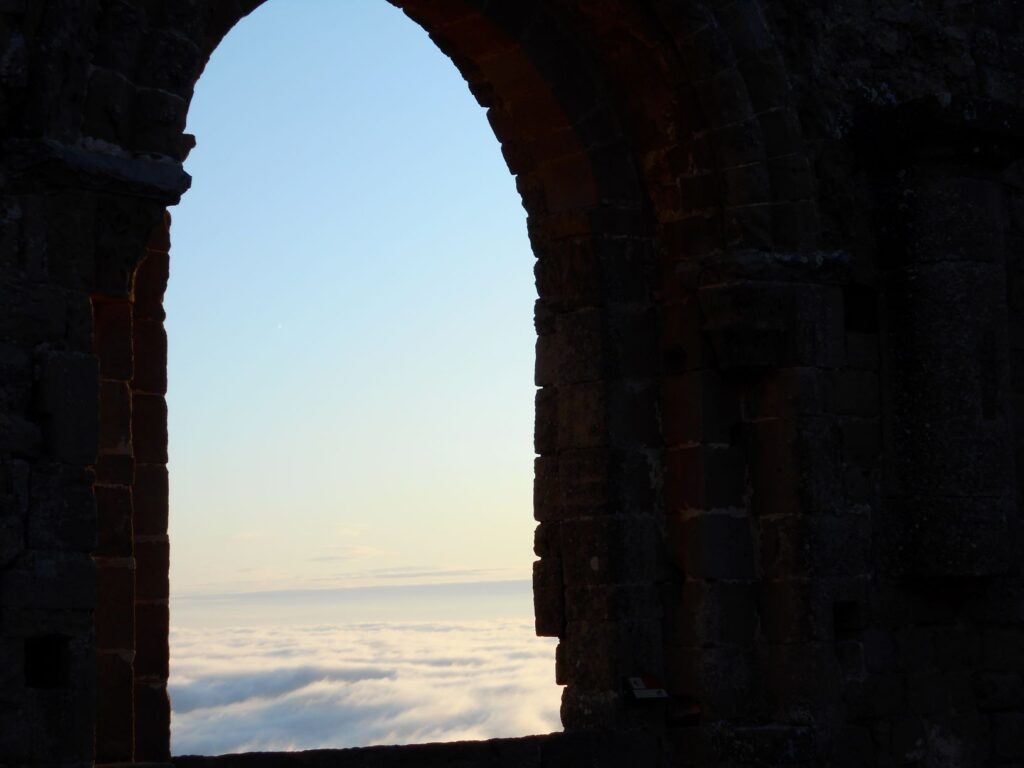Many of the men who joined the Cistercians abbeys that rapidly spread through Europe in the twelfth century had been knights. As monks, they felt they were living a new type of knighthood. In the monastery, discipline was directed toward gaining virtue and awakening the spiritual senses to be ready to build the Kingdom of God and not fall into the snares of the enemy. There was a new form of camaraderie, the spiritual friendship that was born through a life where everything was in common, both the struggle and the victory. Exteriorly it looked like a strong and masculine spirituality, a spirituality of the desert: hard manual labor, silence, and solitude. But at the core was the experience of Jesus’ sweet love plus the focus on three realities which in Latin are feminine words: the Ecclesia, the Blessed Virgin Mary, and the anima. The monks fought their battle for and with the Church, and the Blessed Mother was their model, moreover, as any knight should have a lady, they began to call her Our Lady. Mary had crushed the head of the serpent, not through violence, but through her obedience and humility; these, and the Word of God, which she constantly pondered in her heart, are the best weapons of the Cistercian monk and nun.

The monastery is a schola caritatis, a school of love because only Christ’s love can transform us, the love who is the Holy Spirit within us. He has led us to the desert to speak tenderly to our hearts (Hosea 2:14), and in the desert of self-knowledge and mutual service, we have learned that we can’t live the Christian life unless we lean on Christ. This is how holiness looks according to St Bernard and is expressed in the words of the Song of Songs, Who is this coming up from the wilderness, rich in grace and beauty, leaning upon her beloved? (Song 8: 5, SC 85). God is not asking us to be perfect but to depend on him in love; this is our joy and hope. When God loves, he desires nothing but to be loved, since he loves us for no other reason than to be loved, for he knows that those who love him are blessed in their very love (SC 83: 4), says St Bernard. And he continues, He asks nothing else, and she has nothing else to give. That is why he is the bridegroom and she the bride” (SC 83:5).
This is the good news we are called to share with others. Is it not our deepest desire to be fully known and loved, just as we are but in a way that reveals to us our common greatness? As the soul is made beautiful, she can recognize her destiny and, looking at her Savior, cry out with a joy greater than Adam’s at the first sight of Eve, the joy of recognizing ourselves in Christ. In the words of St Aelred, I shall embrace you, Lord Jesus. I, small, shall embrace you small; I, weak, you weak; I, a man, you, a man. The bride cannot keep this gift to herself. As she receives the kiss of the Bridegroom, which is the Holy Spirit, she becomes a mother, full of the milk of compassion, inebriated with the new wine of zeal that filled the apostles on Pentecost: Indeed when you return to us full of grace and love, you will not be able, in the ardor of your spirit, to conceal the gift you have received (SC 49:3).
A knight, a bride, a mother, couldn’t these be models for a Christian disciple today? Freedom, joy, peace, love are the fruits of leaning on him and praising Him together. Then we can truly experience that nothing is impossible with God (Lk 1:37) or, in St Bernard’s words, Nothing is impossible for believers, nothing difficult for lovers (On Conversion 38).
 Find us on Facebook
Find us on Facebook Follow us on Pinterest
Follow us on Pinterest